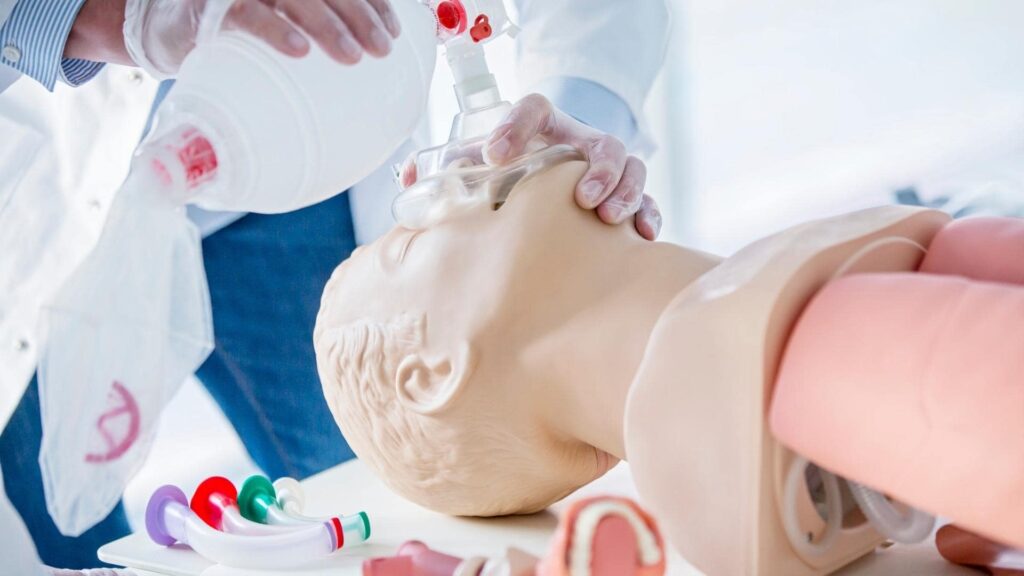Healthcare professionals play a vital role in their teams as they work in fast-paced environments. They should, as a result, be skilled in performing basic life support. CPR skills are essential in the everyday lives of healthcare workers because their profession focuses on saving lives. The potential for patients going into cardiac arrest is something they need to be aware of at all times and provide help if necessary. So, what is CPR for a healthcare provider?
What is BLS?
Basic Life Support (BLS) refers to the care first-responders, healthcare providers, and public safety workers provide to patients experiencing cardiac arrest, respiratory distress, or obstructed airway. During their training, they learn how to perform cardiopulmonary resuscitation (CPR), use automated external defibrillators (AED), and relieve airway obstructions in patients.
If you feel confused about the differences between the new BLS and older CPR-HCP, here is a quick explanation of what changed. First, BLS replaced HCP to distinguish between regular CPR courses and those taken by professionals needing the knowledge for high-performance resuscitation while working with a team of professionals.
Also, the course content changed to cover more topics and greater detail. These are practiced over a longer duration to ensure students understand all the life-saving skills required by their professions.
Therefore, before deciding which training you need, see which certificate your particular job title requires.
How BLS Differs from CPR A&C (HCP)
The difference between CPR levels A & C and BLS (HCP) is that BLS is the foundation of resuscitation training for all healthcare professionals. These include nurses, physicians, EMS paramedics, and all other healthcare and public safety personnel. During the training, participants learn to use single-and multiple-responder CPR, use the AED, and relieve choking victims of obstructed airways.
On the other hand, anyone can take a CPR A or C course, depending on their personal or workplace needs. For example, the training required by the WSIB for businesses and organizations ensures that some of their staff members have safety training for dealing with workplace emergencies. The Level A course covers adult CPR, whereas, during Level C, participants also learn to perform CPR on children and infants.
Of the three, BLS is the most prolonged and intense course requiring four hours to complete.
Learn about Basic Life Support Course you might need
Certify for basic life support to assist someone with your life-saving skills as you complete the course with us.
What is the Course Content for BLS?
The Basic Life Support course content includes the following:
- Introduction to Basic Life Support
- The skills required for Basic Life Support
- Correct glove removal
- Primary patient assessment
- Special considerations
- Airway obstruction and choking in all ages
- Assisted ventilation
- Trauma
- Hypothermia
- Opioid Overdose
- Anaphylaxis
- The Six Rights of Medication
- High-Performance CPR for adults, children, and infants
- Care for post-cardiac arrest patients
- High-performance team communication and post-event debriefing

Course Duration & Pricing
BLS (HCP) is a four-hour all-in-class course and costs $64.99. Certification is valid for one year and must always remain valid for professionals throughout Canada.
Use of Equipment Training
Some of the equipment you learn to use during BLS includes the AED, blood pressure monitoring, and applying oxygen masks.
Prerequisites for BLS Training
There are no prerequisites for taking BLS training, but you must be at least 16 years old and take a ministry-approved course. In addition, to pass the course, you must have 100% attendance and a 75% pass on the knowledge test based on a multiple choice test.
What Professions require a BLS Certificate
Physicians, nurses, dental professionals, paramedics, rescue team members, firefighters, sports-medicine professionals, public safety personnel, etc., typically require BLS certification.
Importance of taking BLS
The advanced form of CPR training that helps them recognize and respond to cardiovascular and breathing emergencies is known as Basic Life Support (HCP). Besides providing you with the knowledge and confidence to save a person’s life if they suffer a cardiac arrest or another medical emergency, Basic Life Support also leads to better job opportunities. Holders of the certification often qualify for higher pay.
The skills learned during the training prepare you to deal with several different types of situations, whether these arise in the home, at work, or anywhere else.
Some people take a separate Airway Management & Oxygen Therapy course to enhance their knowledge. During the additional two-hour training, usually taken by healthcare professionals, the course covers how to open a patient’s mouth, perform a tongue-jaw lift, use airway adjuncts, administer supplemental oxygen, etc. Certification for the Airway Management & Oxygen course has a 3-year validity.
Find Basic Life Support Training Near You With Coast2Coast
Depending on where you live in Ontario, Coast2Coast has several facilities where you can choose to take BLS training to fit your busy schedule. Look for facilities in Western and Eastern Ontario or across the Greater Toronto area and choose from their range of class schedules that often include morning, afternoon, and evening sessions.
Coast2Coast provides the Canadian Red Cross BLS program and offers significant bundle discounts for those registering to do both a BLS -HCP and First Aid training course.





















